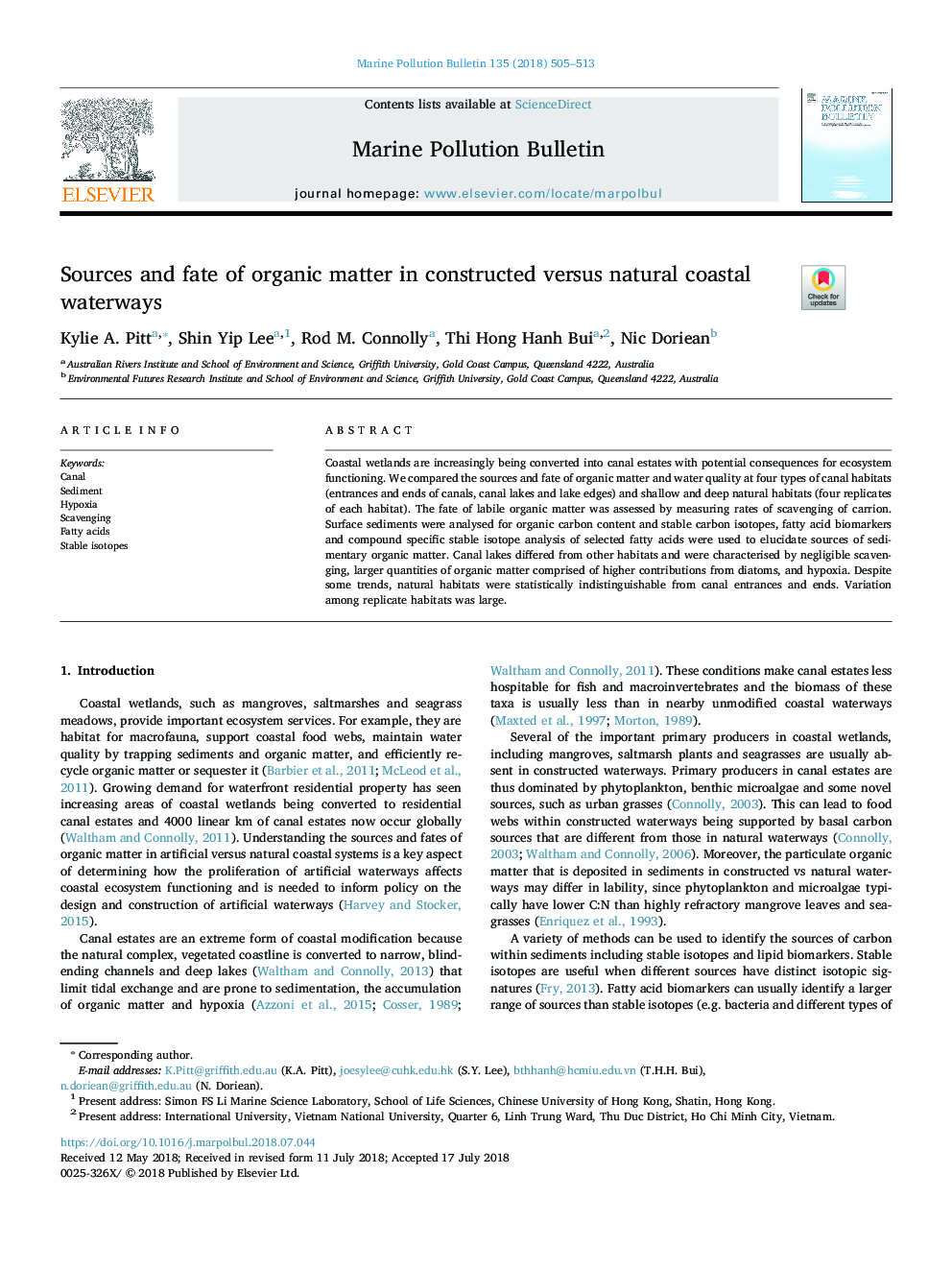| Article ID | Journal | Published Year | Pages | File Type |
|---|---|---|---|---|
| 8870718 | Marine Pollution Bulletin | 2018 | 9 Pages |
Abstract
Coastal wetlands are increasingly being converted into canal estates with potential consequences for ecosystem functioning. We compared the sources and fate of organic matter and water quality at four types of canal habitats (entrances and ends of canals, canal lakes and lake edges) and shallow and deep natural habitats (four replicates of each habitat). The fate of labile organic matter was assessed by measuring rates of scavenging of carrion. Surface sediments were analysed for organic carbon content and stable carbon isotopes, fatty acid biomarkers and compound specific stable isotope analysis of selected fatty acids were used to elucidate sources of sedimentary organic matter. Canal lakes differed from other habitats and were characterised by negligible scavenging, larger quantities of organic matter comprised of higher contributions from diatoms, and hypoxia. Despite some trends, natural habitats were statistically indistinguishable from canal entrances and ends. Variation among replicate habitats was large.
Related Topics
Physical Sciences and Engineering
Earth and Planetary Sciences
Oceanography
Authors
Kylie A. Pitt, Shin Yip Lee, Rod M. Connolly, Thi Hong Hanh Bui, Nic Doriean,
